Posted by Elena del Valle on October 26, 2015
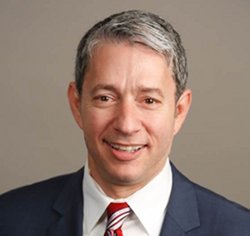
Doug Simon, CEO, D S Simon Media
Photo: Doug Simon
A podcast interview with Doug Simon, CEO, D S Simon Media, is available in the Podcast Section of Hispanic Marketing & Public Relations, HispanicMPR.com. During the podcast, he discusses his company’s Media Influencers Report with Elena del Valle, host of the HispanicMPR.com podcast.
Doug is also the founder of D S Simon Media now Simon Media. His firm pioneered Internet Media Tours and its unique approach to guiding clients, PRketing, was awarded a trademark by the US patent office. He’s provided strategic counsel and executed campaigns for Pfizer, Fidelity, Lincoln Financial, Macy’s, HOOD, the Consumer Electronics Association, Whitney Museum of American Art and the American College of Physicians.
To listen to the interview, scroll down until you see “Podcast” on the right side, then select “HMPR Doug Simon” and click on the play button below or download the MP3 file to your iPod or MP3 player to listen on the go, in your car or at home. To download it, click on the arrow of the recording you wish to copy and save it to disk. The podcast will remain listed in the October 2015 section of the podcast archive
Posted by Elena del Valle on October 21, 2015

Vitamania*
A 2011 Journal of Nutrition report indicates most consumers rely on foods fortified or enriched with synthetic vitamins for their essential micro nutrient intake. That is not surprising given that most of the vitamins we consume today are synthetic, according to Catherine Price, author, Vitamania. What may surprise many is that while in the early years of synthetic vitamin development the United States played an important role, today most of the market is under the corporate thumb of two European companies. And the majority of their production facilities are in China.
Last week in my note about Vitamania (see Journalist believes devotion to supplements keeps us from good health) I indicated Catherine Price, the author, had declined to answer questions. It had been two weeks since I had sent her questions and the deadline for replies was long past. Saturday, October 17, 2015, I received an answer.
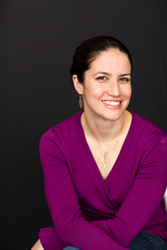
Catherine Price, author, Vitamania*
Below are the questions and answers:
HispanicMPR.com
What was the main reason you wrote the book (other than the question your husband asked you in Lithuania)?
Catherine Price:
I wanted to gain a better understanding of a subject I took for granted. I also was curious about how the story of vitamins might change the way we should think about nutrition as a whole.
HispanicMPR.com:
In one sentence how do you define a vitamin or a nutritional supplement?
Catherine Price:
(Sorry, I can’t do it in one sentence!)
There’s no chemical definition for a vitamin — the word was coined in 1911 before they had been chemically isolated, and it turns out they’re not all part of the same chemical family. The public tends to define vitamins (of which there are only 13) as a chemical that we need in very tiny amounts, and that we usually get from our diets, that is necessary to prevent a specific vitamin deficiency disease, but there exceptions to each of these statements.
A dietary supplement (that’s the official term, not nutritional supplement) is defined by the Food and Drug Administration (which is the administration responsible for regulating America’s supplements) as “a product intended for ingestion that contains a ‘dietary ingredient’ intended to add further nutritional value to (supplement) the diet.”
There’s more info on what substances that definition includes here: fda.gov/AboutFDA/Transparency/Basics/ucm195635.htm
HispanicMPR.com:
Are you opposed to vitamins?
Catherine Price:
To clarify: we have a habit of using the word “vitamin” to refer both to the 13 essential vitamins (A, C, D, E, K and the 8 B vitamins) and to the much broader category of dietary supplements (there are some 85,000 dietary supplement products on the market in America). There’s no way you could oppose the 13 vitamins — we need them in order to survive! But I don’t think that most people need to take them as pills. As for dietary supplements, I’m not necessarily for or against them, but I have a lot of concerns about their safety, efficacy, and the authenticity of their ingredients.
HispanicMPR.com:
What was the greatest challenge to the book project?
Catherine Price:
A lot of the questions I thought were simple (what is a vitamin, how do vitamins work, what do they do, how much of each do we need) do not have answers.
HispanicMPR.com:
What was the biggest surprise?
Catherine Price:
That was also probably the biggest surprise. But once I got over the terror of not having solid answers to my questions, I realized that we should use this uncertainty as a lesson: vitamins are a great example of how little we actually understand about human nutrition. Their story has taught me to stop obsessing about the minutiae of nutrition, and to just eat naturally nutrient-dense food.
*Photos: Penguin Press, Sara Remington
Posted by Elena del Valle on October 16, 2015

Vitamania
Photos: Penguin Press, Sara Remington
While it is true that there are 13 chemicals or vitamins essential for good health. And that the lack of one or more of those compounds result in the death of millions of people around the world. Catherine Price, a Philadelphia journalist, is convinced that the word vitamin has become an easy replacement in our vocabulary for healthy, and that “the very power of vitamins makes them a double-edged sword.”
She believes despite scientific uncertainty about vitamins many people use vitamins as a sort of health insurance that can ensure we live long and healthy lives. In Vitamania: Our Obsessive Quest For Nutritional Perfection (Penguin Press, $27.95), a 318-page hardcover book published this year, she explains the reasons behind her thinking.

Catherine Price, author, Vitamania
Price, who did not respond to questions via her publishing company, points out that the further removed from its natural state food is the lower its nutritional content. Eating a broad diet of nutritionally dense foods, including vegetables and fruits, and staying away from heavily processed foods and sugary beverages may be the best approach to acquiring all the vitamins we require, she says in the Epilogue. She strives to challenge readers to reevaluate their own beliefs about vitamins, nutrition and food. She suggests that while nutrition is complex eating healthy in a pleasurable and scientific way is easy.

Click to buy Vitamania
Comments:
Filed Under: Books
Posted by Elena del Valle on October 9, 2015

WalletHub’s Most & Last Ethno-Racially Diverse Cities
Image: WalleHub
It is no secret that the face of America is changing. Immigration, native births and mixed ethnicity marriages may be among the factors leading to a growing racial and cultural blending across the country.
Since 2011, more than half of children born in the United States have been part of ethnic or racial minorities; and by 2020, the total minority population may grow to 40.7 percent from 30.9 percent in 2000, according to the U.S. Census Bureau.
To get a glimpse of the situation today, Richie Bernardo, personal finance writer, WalletHub, and the folks at his personal finance website researched the topic and consulted 12 academics (six men and six women). With their help he identified what could be the “most ethno-racially and linguistically diverse landscapes.” He compared 313 of the most populated cities nationwide with three criteria in mind: diversity by racial and ethnicity, language and United States region of birth and produced 2015’s Most & Least Ethno-Racially Diverse Cities, a short report.
The report concluded that four of the 10 most diverse cities are in Maryland, and two are in California. They are: Gaithersburg, Maryland; Jersey City, New Jersey; Germantown, Maryland; New York, New York; Oakland, California; Spring Valley, Nevada; San Jose, California; Silver Spring, Maryland; Renton, Washington; and Rockville, Maryland.
At the bottom of the list two of the bottom ten are in Wisconsin. They are: Birmingham, Alabama; Sioux Falls, South Dakota; O’Fallon, Missouri; Eau Claire, Wisconsin; Duluth, Minnesota; Warwick, Rhode Island; Parma, Ohio; Oshkosh, Wisconsin; and Livonia, Michigan.
Interesting findings include that although Laredo, Texas has the highest concentration of Hispanics, 95.2 percent, the racial and ethnic diversity of Oakland, California is four times higher than in Laredo. Mount Pleasant, South Carolina, has the highest concentration of whites, 90.6 percent. Detroit has the highest concentration of blacks, 79.1 percent. Miami has the highest concentration of Spanish speakers, 69.4 percent; and Honolulu has the highest concentration of Asian- and Pacific Islander-language speakers, 32.6 percent.
Posted by Elena del Valle on October 2, 2015
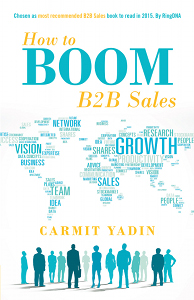
Carmit Yadin, author, How to Boom B2B Sales
Photos: Bohlsen Group
After years in the high tech industry Carmit Yadin began to work in sales. She had to learn how to be a salesperson on her own. In How to Boom B2B Sales (Archway Publishing, $11.99) she shares the insights she gained.
“With dedication, tons of mistakes, studying, asking questions, consulting people I knew and people I didn’t, I found my way,” Yadin said in a press release. “I don’t want anyone with a passion for sales to toil as I had to. Business is between people, not companies. We must provide solutions for these people and stop trying to sell if we want to ultimately boom sales.”
The 121-page book published in 2014 is divided into 22 chapters. In it she stresses that readers should focus on the customer’s financial results rather than their own, break the sales process into small pieces, pursue sales through social media, and develop B2B sales leads and qualify them before following up.
Yadin, a Tedx speaker, focuses her time on helping business leaders increase sales. She lives in Tel Aviv, Israel.
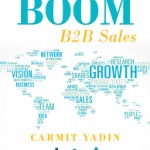
Click to buy How to Boom B2B Sales
Comments:
Filed Under: Books
Posted by Elena del Valle on September 25, 2015

On Romantic Love
Photo: Oxford University Press
Love is an emotion and as such may be rational or irrational. It may be experienced in degrees; it may be conscious and unconscious; and it may be controlled so that we may fall in and out of love. So says Berit Brogaard, professor of Philosophy, University of Miami.
In On Romantic Love Simple Truths About A Complex Emotion (Oxford University Press, $21.95) a hardcover 270-page book published this year, Brogaard attempts to get to the bottom of love’s many contradictions. The book includes black and white photos and original line drawings by illustrator Gareth Southwell.
Why does it matter? She explains that love, unlike marriage, seems to lead to happiness. The reference to love is not only about romantic love. Other forms of love such as friendship, parental, sibling, and companion also are linked to feeling blissful.
George E. Vaillant, a researcher she quotes in the book, says: “Happiness is love, Full stop.” He concluded after years of study on the subject that the ability to be intimate with another person was a strong predictor of health and happiness. The author believes that is too strong a statement. In its place she suggests instead that rational love leads to happiness.
Brogaard’s previous book, Transient Truths, was published in 2012. In her academic research she specializes in philosophy of language, philosophy of mind, and the cognitive sciences.
 Click to buy On Romantic Love
Click to buy On Romantic Love
Comments:
Filed Under: Books
Posted by Elena del Valle on September 18, 2015
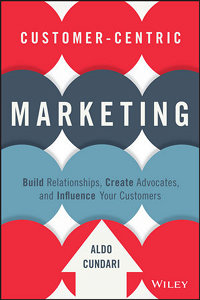
Customer-Centric Marketing
Photos: Wiley, Aldo Cundari
Marketer Aldo Cundari believes the lessons he learned while studying art in and exploring Italy during his formative years have served him well in his 30-year business life. In Customer-Centric Marketing Build Relationships, Create Advocates and Influence Your Customers (Wiley, $25), a 154-page hardcover book published this year, he shares some of the lessons he has learned through trial and error in his career. A main one of those is that marketing should always focus on the customer.
He strives to define the path customers follow and offer insights on customer experience, innovation, content, social media, and operating strategies to guide readers in formulating a marketing plan. He seeks to inform readers on ways to identify and influence new consumers, position their company within the marketplace, find and connect with individuals friendly to the brand and with the potential to spread its message. The book is peppered with graphs, illustrations and screen captures.
“There has been a great deal of change in the marketing world over the last 10 to 15 years,” Cundari said by email when asked why he wrote the book. “The tools and tactics that worked for the last 60 years are no longer effective. It was the information age that led to the onset of social technology that created freedom of choice and the empowered customer. This empowered customer holds all the power in how they will interact with a brand. So finding a new way to communicate to customer was essential. At the same time, new technology has complicated the decision on what is effective and works and what does not. My goal for the book was to put context to where we are and how to better understand the forces affecting marketing.”
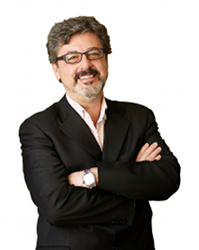
Aldo Cundari, author, Customer-Centric Marketing
Regarding why companies engage in non customer centric marketing he said, “The current marketplace and how you reach customers has become more and more complicated, and without understanding of the forces affecting the challenges, I believe that marketers just default to using the tools and tactics that worked for them in the past, all with ever diminishing returns.”
Cundari explained that finding the data and cases studies that consistently demonstrate that the Customer-Centric Marketing approach works was the biggest challenge in writing the book.
“What I found was when you look deep enough you realize that there are many examples emerging,” he said. “All I applied is the logic and understanding behind the forces, affecting success. What most surprised me was when you remove all the shinny new technology things that supposedly help marketers entice customer and you peel back all the new terminology that has layered confusion over understanding, you end up in the same place we have always been, ‘human nature is, what it is’, you have a person with a need, so why not fill that need.”
Cundari is chairman and chief executive officer of Cundari Group. His firm specializes in integrated marketing, branding and design, and interactive and software development services powered by research insights.

Click to buy Customer-Centric Marketing
Comments:
Filed Under: Books
Posted by Elena del Valle on September 2, 2015
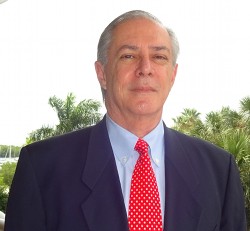
Ronald A. Lacayo, executive director, UTH Florida University
Photo: UTH Florida University
Targeting Spanish dominant immigrants from Central and South America looking to improve their economic prospects by completing their education with a college degree or obtain a second degree online in Spanish the Universidad Tecnologica de Honduras (UTH) is branching out. In August 2015, the owners of the Central American university and the Honduran-USA Chamber of Commerce announced the launch of UTH Florida University online.
Headquartered in Miami, Florida, UTH Florida University, a for profit entity, announced student registration in August 2015 and the beginning of classes September 1, 2015 at uthflorida.us. According to a press release distributed by UTH Florida University, the educational company is licensed by the Florida Commission for Independent Education. The Commission website indicates its functions include the licensure of independent schools, colleges and universities. All classes will be in Spanish and based on the Harvard Business School case method.
“We believe that on-line education is the disruptive innovation of the 21st century that will break the higher education paradigm and finally bring affordable and high quality education to everyone and everywhere thus allowing our communities and countries to grow and prosper,” said Ronald A. Lacayo, executive director, UTH Florida University.
Administrators plan to offer 16 classes in the Fall 2015 semester and 32 for Spring 2016 with the support of 10 staff. They expect the offerings to increase each semester.
“We expect 250 students enrolled by the end of 2016 and 500 by 2018,” said Lacayo by email. “Currently all of 80 faculty members are adjunct. Our staffing strategy is to seek maximum operating efficiency in order to pass along the savings to our students is the form of low and affordable tuition.”
The new company hopes to set itself apart from other distance educational institutions by offering students affordable undergraduate degrees for $9,600 in Business, Marketing and Human Resource Management. Graduate degrees in Management and International Business Administration, Business and Finance, and Business and Marketing will cost $5,880. According to the press release, the Universidad Tecnologica de Honduras which was founded in 1986 and has over 15,000 students.
Posted by Elena del Valle on August 28, 2015

Dreaming Forward
Photos: Martha Casazza
Martha Casazza, author and education scholar, wanted to know about the dreams of America’s Hispanics. In Dreaming Forward Latino Voices Enhance the Mosaic (iUniverse, $19.95), a softcover 242-page book published this year, she showcases the stories of 19 Hispanics in an effort to provide a platform “for people who have faced disappointment and fear in their earnest desire to dream forward in the U.S. and are committed to effecting change in their community.”
The project, originally supported by the university where she worked, required several years to be completed. The author funded it herself.
“When I was a university dean, I was fortunate enough to get involved with the Pilsen community on the south side of Chicago,” she said when asked why it was that she chose the group that she did for the stories. “Pilsen is primarily a Mexican-American community. I was never a sit-behind-the- desk administrator, and I worked closely with a few community organizers to organize the first Tardes en el Zocalo weekend event in Pilsen to bring neighbors together. I was really impressed at how important the idea of community was in Pilsen. From this experience, I came to know students and organizers from this area and worked closely to create more opportunities for them to attend college and succeed.”
In the book, she shares the stories of Mexican American individuals captured via in person interviews in their place of choice by the author and her colleagues. They originally collected 48 stories. Save for one all the ones in the book were told in English over a four year period. Each story ends with a Reflections section designed to elicit big picture thinking about the overall community.
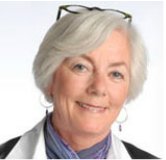
Martha Casazza, author and education, scholar
“We desperately need to engage in a national dialogue about how to best foster and sustain healthy urban communities, especially as our cities become home to a more diverse array of people than ever before,” Casazza said in a press release. “By working inside the community and listening to their voices, I can see the roots of a healthy, sustainable Latino community here in the U.S. and in my own city of Chicago.”
When asked about the results, the author said, “The greatest reward was being trusted by individuals to tell their stories. The book reflects authentic voices and hopefully helps to personalize the struggles of a vibrant and passionate community in urban American where there is a strong commitment to dream forward through purposeful action.”
Casazza has a Doctorate in Education and is a founding partner of TRPP Associates, LLC, an educational consulting business that focuses on maximizing learning environments. She is also a member of the Fulbright Association as well as the Board of Directors of Heartland Alliance.

Click to buy Dreaming Forward
Comments:
Filed Under: Books

























